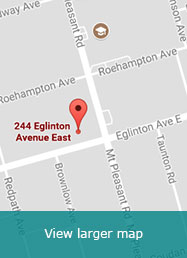Emerging Technologies
Before any future investments proceed, Ontarians need transparent, comprehensive information about the costs and benefits and the resulting impacts on electricity rates.
Many new technologies and approaches, like energy storage (batteries, pumped storage, etc.), electric vehicles, distributed energy resources (DER) and demand response are significantly changing the way Ontario produces and delivers electricity to our homes and businesses. These changes include new players -private developers and investors, technology and service providers. There is also a new consumer group -“prosumers”- people who produce and use their own electricity and sell their surplus to the system.
These new technologies and approaches can be integrated to create a micro-grid, a discrete energy system of DERs and consumer loads that can disconnect from the traditional grid and operate autonomously.
Developers, private investors, institutions like hospitals and schools and prosumers can share the revenues and establish their own “local, reliable” energy security. For utilities, it presents “non-wires alternatives or NWAs”. By engaging in load-modifying distributed generation and storage technologies, NWAs offer utilities a mechanism by which to leverage the growth of distributed energy resources. These non-traditional options help defer, mitigate and or potentially eliminate the need for traditional utility investments in transmission and distribution infrastructure.
They also raise key policy questions. How will the costs and benefits be defined and shared among the stakeholders? Who will pay for stranded assets created when traditional infrastructure is not needed before the end of its economic life? Have provisions been made for the decommissioning and management of wastes from these new technologies? Will Ontario continue to have one uniform electricity price for all Ontarians?
- Regulators are focused on determining: the value of DERs; “value stack” for energy storage and microgrids; the costs; and, how these will be shared among the stakeholders. Consumers ultimately foot the bill.
- The life cycle economics of these emerging technologies are typically in the 20-30 year range compared to a hydropower plant that can run 100 years or a nuclear plant that can operate for 60+ years. This means shorter investment cycles for consumers.
- Consumers leaving the traditional grid for a microgrid can potentially strand the former’s assets. To cover these costs, states like California have set an “exit fee” for customers leaving the traditional grid.
- Ironically, some microgrid advocates see the decentralized electricity systems as more efficient and cost effective than the traditional bulk system. At the very same time, some of the new players are calling for the aggregation the DERs and microgrids into large “virtual power plants” given economies of scale.
- In Ontario, decentralization of the bulk electricity system is being accelerated by the provincial government’s adoption of region based electricity planning. Currently, twenty-one such plans have been developed across Ontario. While this “downloads” accountability for energy decisions to the local level, it is not clear how regulators will apportion the costs and benefits of a regional plan, all regional plans and the bulk electricity system. Potentially, this could lead to electricity price variations across Ontario and a system based on the consumer’s ability to pay, not “power to the people” at a universal price.
- This decentralization trend and the associated cost pressures are occurring at a time when Local Distribution Companies (LDCs) are already juggling other significant challenges—infrastructure renewal, modernization, changing workforce, etc. Many LDCs have established “unregulated” subsidiary companies with private sector partners to pursue the new business opportunities and share the profits. Ontario consumers have no transparent way of knowing whether the deals are fair to them.
- There are several potentially negative environmental impacts that depend on the type and efficiency of the technologies being used:
- Storage batteries use raw materials like lithium and lead which present environmental hazards if not properly managed, disposed of and or recycled. Much more work is required to determine the environmental impacts of these technologies/microgrids and funding requirements and sources for their decommissioning and management of wastes.
- Many microgrids involve combustion, especially the use of pollution emitting fossil fuels. While these impacts may be smaller in scale compared to a large power plant, they may also be closer to more densely populated areas. These new systems may also be less efficient than larger plants given economies of scale.
- The integration of DER/microgrid systems and the bulk electricity system should include the development of appropriate safety and training standards and practises to ensure continuing public and worker safety.






